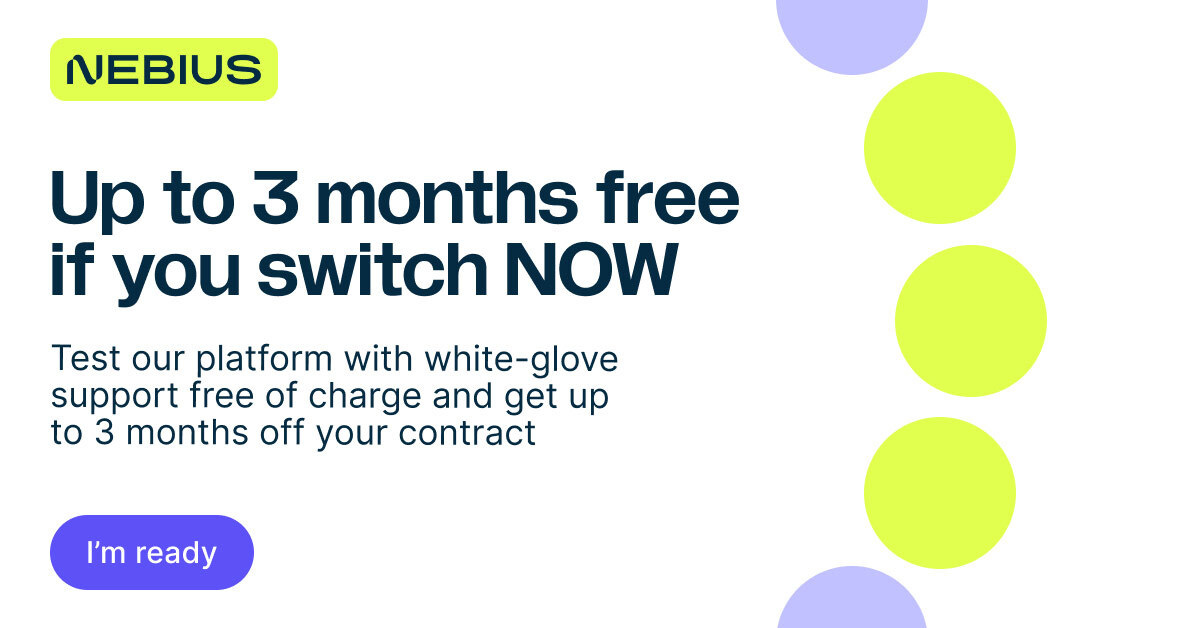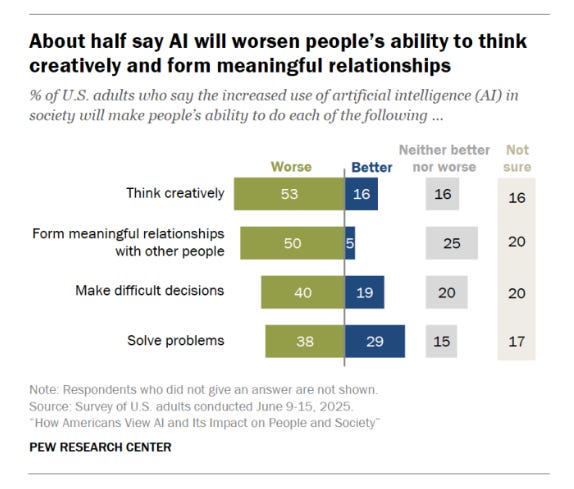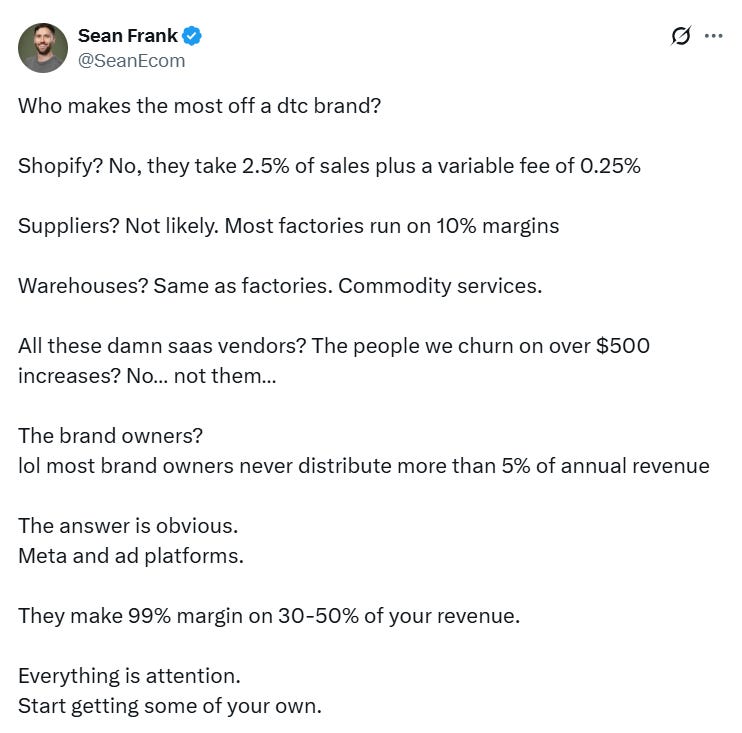Win the Scroll War Before the Click
⚔️ The Q4 Anchoring System to scale with a single unforgettable claim, Americans Want AI Transparency but Stay Skeptical, and more!
Howdy Readers 🥰
In this newsletter, you’ll find:
⚔️ Win the Scroll War Before the Click
🏷️ Americans Want AI Transparency but Stay Skeptical
🚀Tweet of the Day
If you’re new to Buyology then a hearty welcome to you, You’ve reached the right place alongside 50k+ amazing people, Before you forget, if someone forwarded this newsletter to you, don't forget to subscribe to our newsletter so you never miss out!
Together with Nebius
Cut AI Cloud Spend Before Your Next Invoice
Every extra day on AWS or Azure burns budget and pushes back your roadmap. Slow GPU queues and surprise bills quietly erode margins while your competitors sprint ahead.
Nebius ends the bleed with free migration and up to three free months, so you start saving instantly.
Operators switching over see 30–50 % lower GPU costs and consistent pricing around $2 per hour, while training large models up to 50 % quicker with instant scaling
Teams like Recraft and Captions already trust Nebius for fast, always-on GPUs and rock-solid clusters that let them ship models without delay.
Switch to Nebius and lock in your free months before your next cloud bill hits!
⚔️ Win the Scroll War Before the Click
In a season flooded with discount noise and cloned creatives, most marketers are still chasing performance with tactical one-offs. The smarter play? Anchor your entire campaign around one unforgettable claim-layer video, and build the rest of your creative suite to amplify, prove, and close that first impression.
That’s the core of the Q4 Anchoring System: 1 narrative core → 5 supporting proof assets → 1 signal-rich cluster that adapts across platforms, speeds up feedback loops, and aligns with how customers actually shop in Q4.
🧩 Step 1: Launch the Claim Layer (Your Hero Video)
This is not just a UGC. It’s your brand’s sharpest promise told in the most rememberable way.
The first 3 seconds must deliver your brand name, unique angle, and visual hook. Think “Q4 Escalation,” not introduction; they don’t need to meet you, they need to remember you.
Frame it like a stake in the ground: this video must start the scroll, set the expectation, and plant the seed for delayed conversions.
📐 Step 2: Cluster Your Persuasion Assets
Once the anchor video is live-tested, surround it with assets that magnify belief, not just add impressions.
3 Statics
• Static 1 = Objection Killer (“I thought it wouldn’t fit my skin” → testimonial or quote)
• Static 2 = Credibility Spike (social proof, press, founder credibility)
• Static 3 = Outcome Visual (transformations, lifestyle contrast, or unboxing)2 Motion Assets (GIFs or loops)
• Highlight 1–2 product differentiators in playful, fast format
• Designed to refresh attention and re-attract scrollers who skipped statics
These are not random. Each asset plays a role in psychological sequence — from belief install → doubt remove → social proof → memory spark.
🔁 Step 3: Optimize the Feedback Loop
Same ad set, same audience: let Meta/TikTok build shared learning across these formats. This creates a flywheel of conversion cues.
Use creative ID naming for clustering insights (e.g. “Q4_Anchor_UGC1”, “Q4_Proof_Static2”).
Stack this system on top of search retargeting: those who saw the anchor → Googled you later → get hit with the most persuasive static (retargeted via branded search or PMax creative matchback).
Why It Works Now
In Q4, every scroll is war. CPMs spike, attention drops, and customers skip anything that smells like “more of the same.” The Q4 Anchoring System creates a cohesive, claim-led imprint across their journey, not random, disjointed creatives that burn budget and confuse intent.
This isn’t just better creative. It’s better mental availability engineering. You don’t need 20 ads. You need 1 unforgettable truth, told 6 persuasive ways.
🏷️ Americans Want AI Transparency but Stay Skeptical
A new Pew Research survey highlights that while many Americans welcome AI in certain tasks, they strongly want transparency and control over where it’s used.
The Breakdown:
1. People Want More Control - About 60% of Americans want more control over AI in their lives, up from 55% last year. Seventy-six percent say it’s extremely or very important to know whether pictures, videos, or text were made by AI or by people, yet only 12% feel confident they could tell the difference themselves.
2. Where People Accept vs. Reject AI - Most support AI in data-intensive areas like weather prediction, fraud detection, and drug development. But about two-thirds oppose AI in personal domains such as religious guidance and matchmaking.
3. Younger Audiences Are More Aware - Awareness of AI is highest among adults under 30, with 62% saying they’ve heard a lot about it, compared to only 32% of those 65 and older. Yet younger adults are also more likely to believe AI will harm creative thinking and meaningful human relationships.
Over half of Americans fear AI will weaken creativity and human connection, and they want transparency when AI is used. Brands that clearly label AI involvement and show human input can build trust and stand out with audiences who value openness.
🗝️ Tweet of the Day
Advertise with Us
Wanna put out your message in front of over 50,000 best marketers and decision makers?
Checkout our Partner Kit here🤝
At Buyology, we care about our readers and want to provide the best possible experience. That's why we always look for ways to improve our content and connect with our audience. It would be amazing if you could hit us up with feedback about our content or absolutely anything, we are always up for a chat 🥰
Thanks for your support, We'll be back with more such content 🥳



